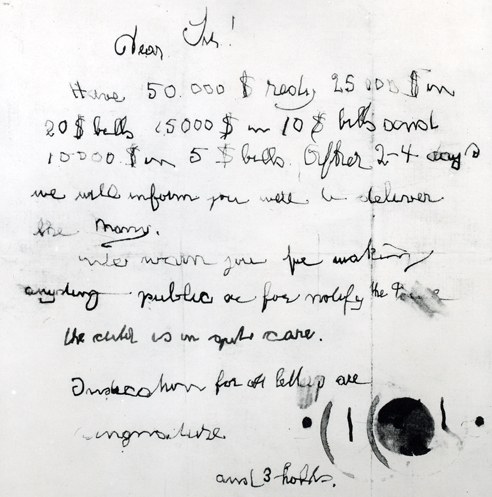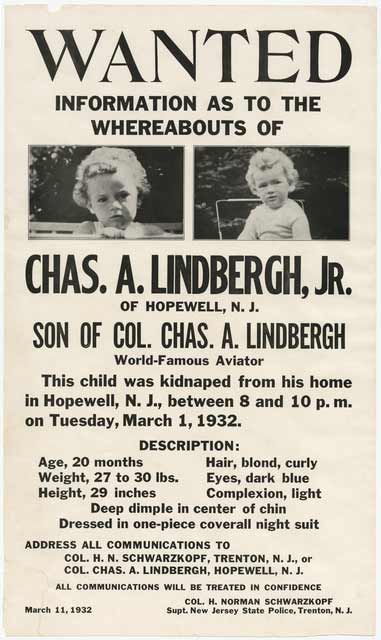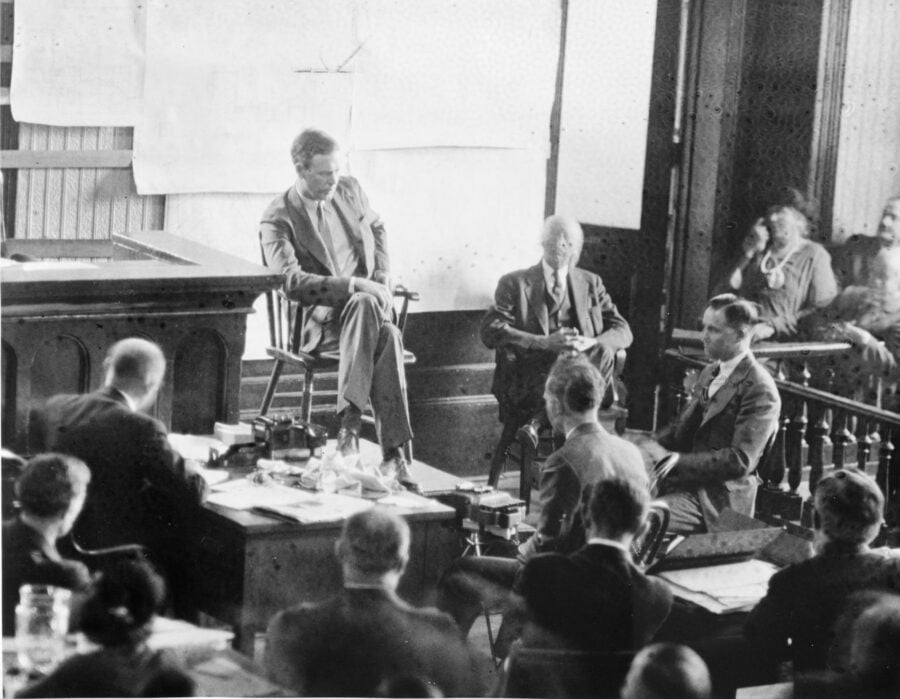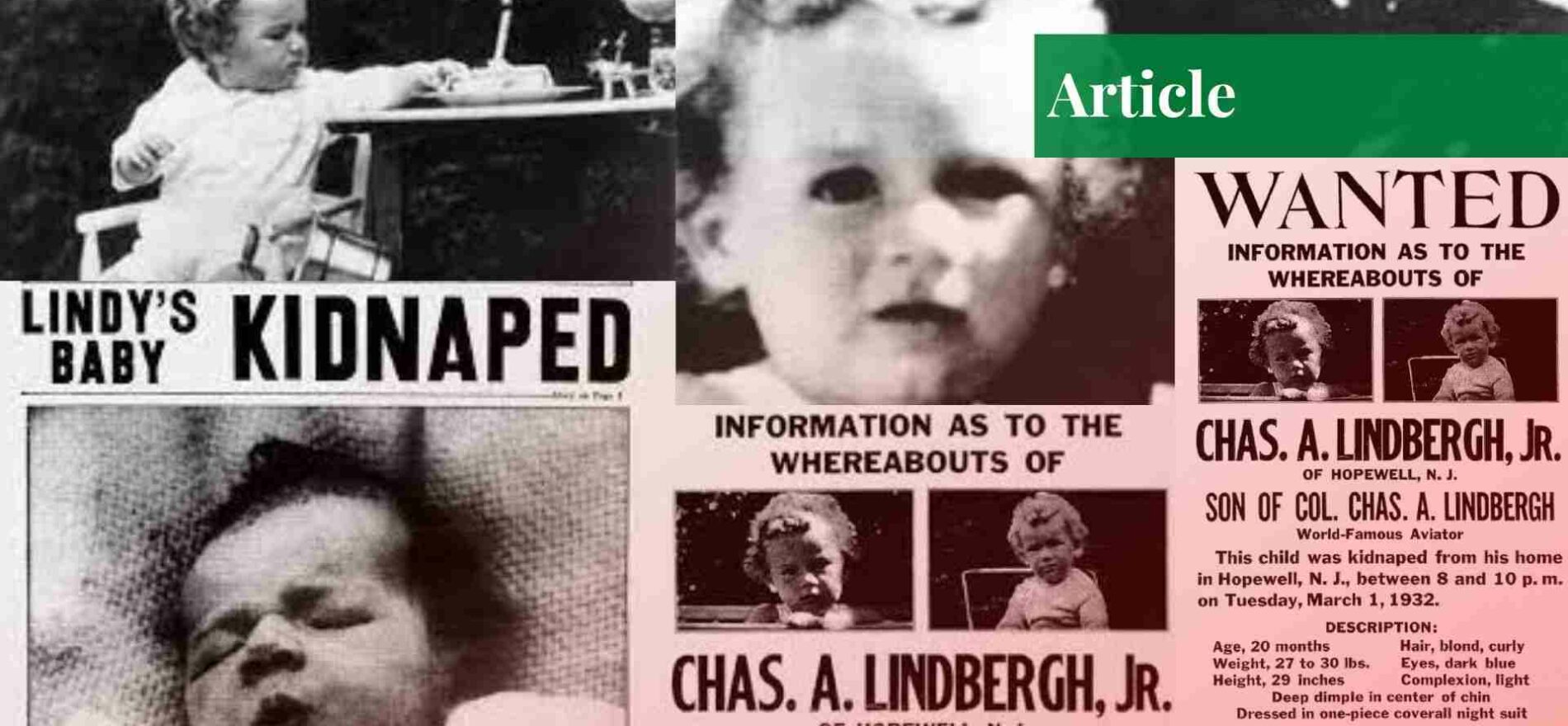Hafsa Ammar is a graduate of the National Defence University, Islamabad. Her areas of expertise are narrative building and propaganda warfare, centered around the Soviet Union and modern-day Russia.
The Lindbergh Case
In 1930, the world-famous aviator Charles Augustus Lindbergh settled down with his wife, Anne Morrow Lindbergh, in a mansion in Hopewell, New Jersey. He gained much popularity for his solo flight across the Atlantic Ocean, which is why he chose seclusion with his family for his retired life. However, the sequestration cost him dearly, as in early 1932, on the first of March, his baby—Charles Lindbergh Jr.—was taken from his nursery in the dark of night.

The family nanny, Betty Gow, reported that she had put down baby Charlie for his nap and went back to check on him after 2 hours; much to her horror, the window was opened and Charlie was gone. She ran to alert the parents, Charles and Anne, but by then, it was too late to follow the perpetrator into the night.
Within the next half hour, chaos had taken over what was previously a happy abode. Law enforcement had put up blockades leading to and from the 390-acre property. The nearby hospitals and police stations had been alerted. Once the scene of the crime was canvassed properly, several pieces of evidence were found, which included a ransom note demanding $50,000 for the safe return of the baby, a homemade ladder that the abductor brought with him—broken into multiple pieces, and discarded a few paces away from the house—tire tracks from the getaway vehicle, a chisel that was used to crack open the window, and distinct sets of footprints.

Why, after so much concrete evidence, was the abductor not apprehended in time? The police became hurried and hasty due to the instant fame that surrounded the Lindbergh case and made mistakes that cost them dearly. A few days passed with radio silence till suddenly another ransom note made its way to the Lindberghs on March 5, demanding a much higher sum of $70,000 alongside a warning not to involve the police.
Dialogue and Negotiation
Dr. John Condon stepped in after he read about the “Lindbergh Baby Kidnapping” in the newspapers and decided to act as an intermediary between the kidnapper and the parents. $70,000 in 1932 was an amount bigger than one could even fathom. Dr. Condon met the kidnapper in a cemetery at night upon his request. Although the darkness shielded the kidnapper’s identity, a severe German accent could not be masked. The negotiations had two primary goals: a reduction in the ransom amount and proof of life of Charles Lindbergh Jr.
Both were seemingly met with success when the amount was reduced to the same $50,000—as was mentioned in the first note—and soft pink pajamas, the ones that Charlie was wearing on that accursed night. The parents agreed to pay.

The Exchange
The kidnapper set forth the instructions for the Lindberghs that they would hand over the money through Dr. Condon, and once the exchange was made, he would leave their 20-month-old on a boat, The Nelly, anchored near Massachusetts. Afterward, the Lindberghs went to the boat and cemetery repeatedly, but their child was not returned, and the kidnapper was in the wind.
Charles Lindbergh Jr. found his way back to his parents under the most unfortunate circumstances one could imagine. On 12th May 1932, his body was found decomposing in a shallow grave only three kilometers from his home. After exhuming the body, the conclusion was reached that the boy had most certainly died the day he was kidnapped, and the clothes provided by the kidnapper as “proof of life” were stolen in advance due to the anticipated request.
The Lindbergh Law
News of the Lindbergh kidnapping had reached far and wide on both domestic and international platforms, deeming it “The Kidnapping of the Century.” The US Congress, under the Roosevelt administration, decided to pass the Federal Kidnapping Act on June 22, 1932, only a month after Charles Lindbergh Jr. had been found. It declared kidnapping to be a federal crime which gave state authorities immediate power to move across state lines to catch the perpetrator.
The Trial
Two years after the incident had taken place; some bills paid at a gas station were compared and matched to the notes paid by the Lindbergh family in their ransom. It was recognizable due to the gold certificate it came with, something which had been discontinued since then. A German carpenter named Bruno Richard Hauptmann was arrested on 19th September 1934 because the ransom notes were connected to him. And thus, the two-year delayed trial began. He claimed innocence but luck was not on his side. The broken ladder found near the crime scene was a perfect match for his furniture; his script was a match for that found on the notes and much more.

In 1935, the trial was officially concluded, and Bruno Richard Hauptmann was sentenced to death for first-degree murder. Hauptmann did try to get out of it but to no avail. His major claim to innocence was that the large amounts of money found on him (hidden in an empty oil canister) were not his own but were being held for his friend, Isidor Fisch. The police did not believe him, rightfully so, as Isidor had died in Germany in 1934.
Hauptmann served his death sentence on April 13, 1936, via an electric chair. His wife challenged the death sentence 45 years later, but the court refused to reopen the case on her weak demands. The case is still studied extensively to this day, as it became the foundation of a major legislative change in the United States.
If you want to submit your articles, research papers, and book reviews, please check the Submissions page.
The views and opinions expressed in this article/paper are the author’s own and do not necessarily reflect the editorial position of Paradigm Shift.


















